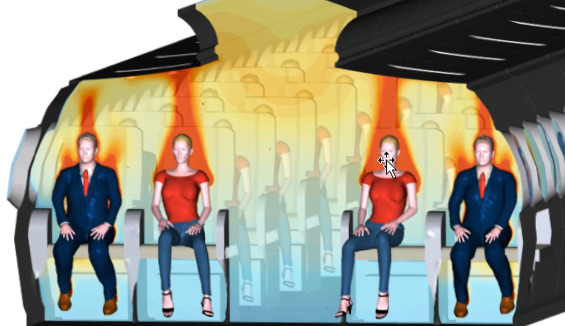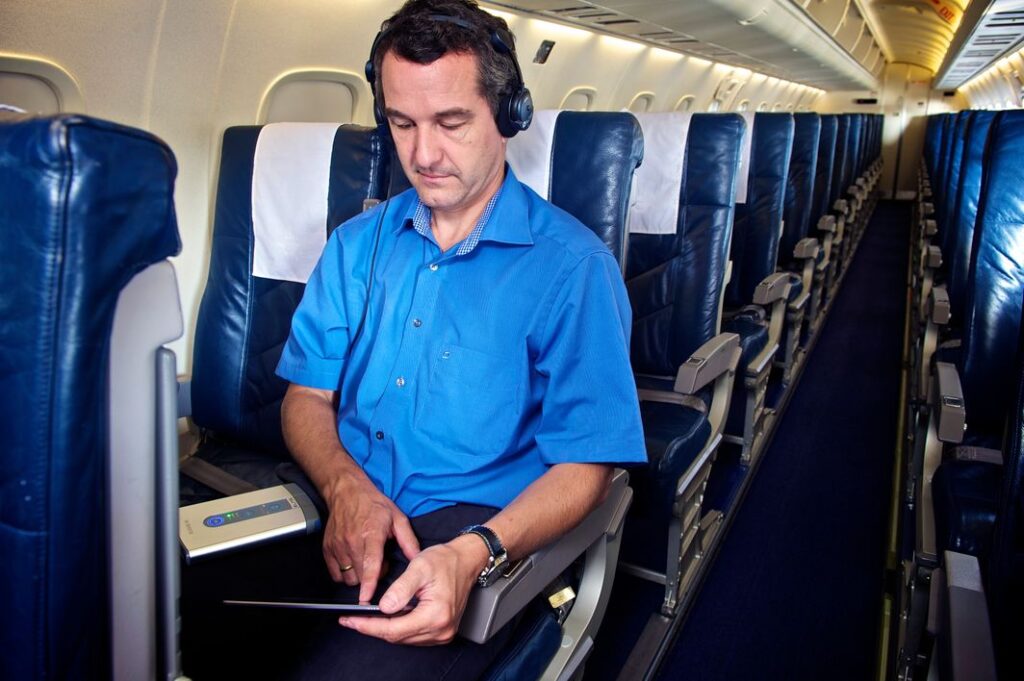Aircraft cabin comfort is important – and we know it!

Understand why aircraft cabin comfort is important. Learn more by registering for our on-demand webinar.
Imagine you just finished a week of hard work on a trip to Istanbul. You are finally heading back home. You enter the plane and you take your seat. Outside, it is 45°C. The plane is partly under the shade of the airport building, and partly under the beaming sun. Suddenly, the pilot announces a one-hour delay before take-off on the speakers. So, you make yourself comfortable on your seat and try to make the best out of this inconvenience. Now imagine there is no proper air-conditioning and the engine is making a monotone noise that is really getting on your nerves. As the minutes go by, the heat from the sun is starting to make you sweat. The noise is giving you a headache. The pilot then announces that the delay will really take at least two hours, instead of one.
This is when you realize how important cabin comfort engineering truly is.
Acoustic and thermal comfort
Cabin comfort engineering can be reduced to two main aspects: noise and thermal heat. They determine how the pilot and the passengers feel aboard the aircraft. Nowadays, these are taken into consideration all throughout the development cycle. In the beginning, the ‘concept phase,’ engineers need to define the targets and objectives of overall noise levels and plan how to translate these for engine levels, acoustic isolation material, acoustic noise, flow noise, etc., as well as set temperature boundaries. Then, on the ‘detailed design phase,’ engineers know the shape of the aircraft, they prepare 1D designs and make 3D simulations. This is where they design electrical systems, such as the air-conditioning system, and where they use simulations for prediction. Lastly, in the ‘validation and troubleshooting phase,’ they perform physical measurements on-the-ground and in-flight to validate the performance of the components and troubleshoot any issues, making it ready for production.
Enhancing the acoustic comfort
For aircraft interior noise there are no set regulations, but rather guidelines. This allows for each company to have its own desired signature sound. Noise should not exceed certain levels, but it should also “sound right” —it should be pleasant to the human ear. The type of engine is considered in-cabin noise engineering, as all engines have slightly different noise signatures. Engineers need to understand how that noise travels from the outside to the inside as accurately as possible to be able to tackle it in the most efficient manner. After take-off, and once the aircraft takes speed, there is another noise component engineers need to consider: airflow. Airflow is turbulent and creates a broadband noise inside, which becomes dominant at cruise speed. This, too, should be accounted for from the very start of the development cycle.

Optimizing the thermal comfort
For thermal comfort, passenger safety and expectations play a pressing role. Airline companies differentiate from one another by achieving higher passenger comfort. For them, is important to continuously have every-day customers for sustainability. In general, you want to reduce draughts and thermal gradients in the cabin as much as possible. People don’t like it when there is a significant temperature difference between their head and their feet—it needs to feel uniform.

The aircraft needs to be able to achieve the right temperature balance within 30 minutes, according to regulations. This usually means cooling-down. The challenge here is to keep the outside heat from propagating inside through the structure—it is, after all, a metallic structure. The trim of the aircraft and the thermal/acoustic blanket act as a shield, and depending on how the ventilation system is positioned, the aircraft cools down slower or faster. Once in the air, it is no longer about cooling down fast enough, but about keeping a uniform and pleasing temperature in the entire cabin shaft, striving for a sufficiently warm cabin-air.
Balancing against other attributes
A great balance between the acoustics and the thermal heat in the cabin is a key to success, but so is keeping it all lightweight. For this, engineers need to consider the structures and materials of the aircraft. Achieving more than one objective with one component, or ‘multi-attribute design optimization,’ is desirable in aircraft design. For cabin comfort, it is necessary to properly design the acoustic blanket of the aircraft; one that dampens the noise, serves as thermal isolation, and is light enough. Engineers could easily lower the heat and the noise in the cabin by incorporating more materials and devices into the aircraft, but that’s not the idea. For aircraft, you need minimal material for maximum effect.
All in all, considering comfort next to flight performance all throughout the development cycle of an aircraft is not only important but necessary for success.
When cabin comfort is engineered well, you will no longer mind taking a comfortable two-hour nap when your next flight is delayed—except, of course, if the person seating next to you is a snoring one.
Learn how to solve cabin comfort problems throughout the development cycle in our on-demand webinar.
Register here: Cabin Comfort Engineering – On-Demand Webinar


